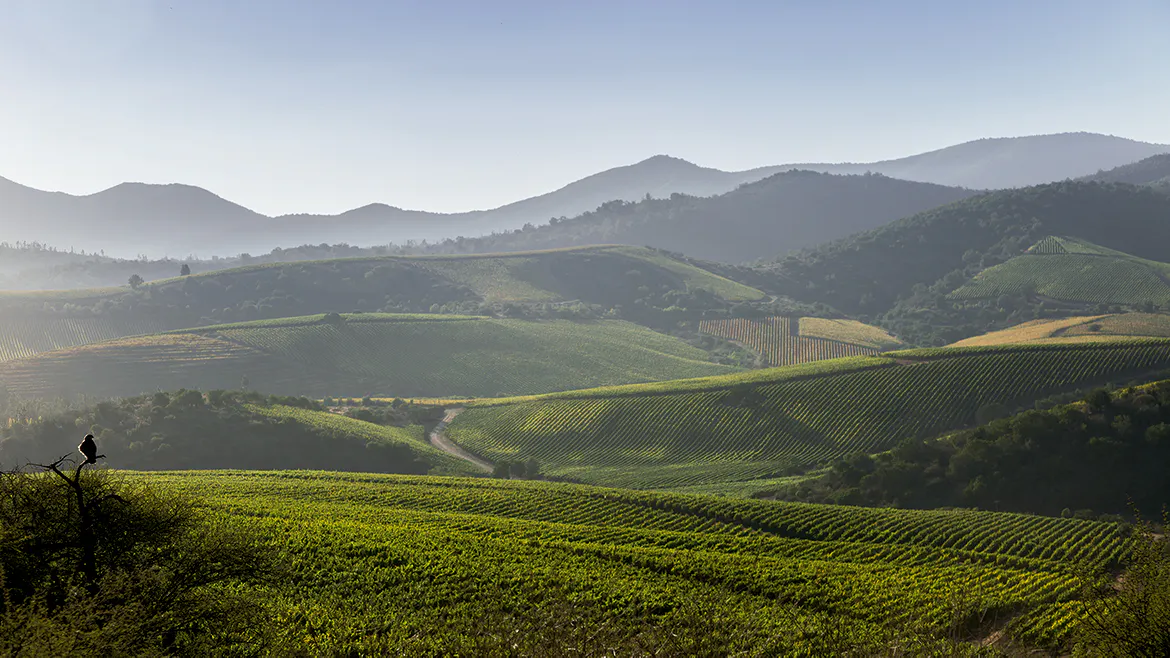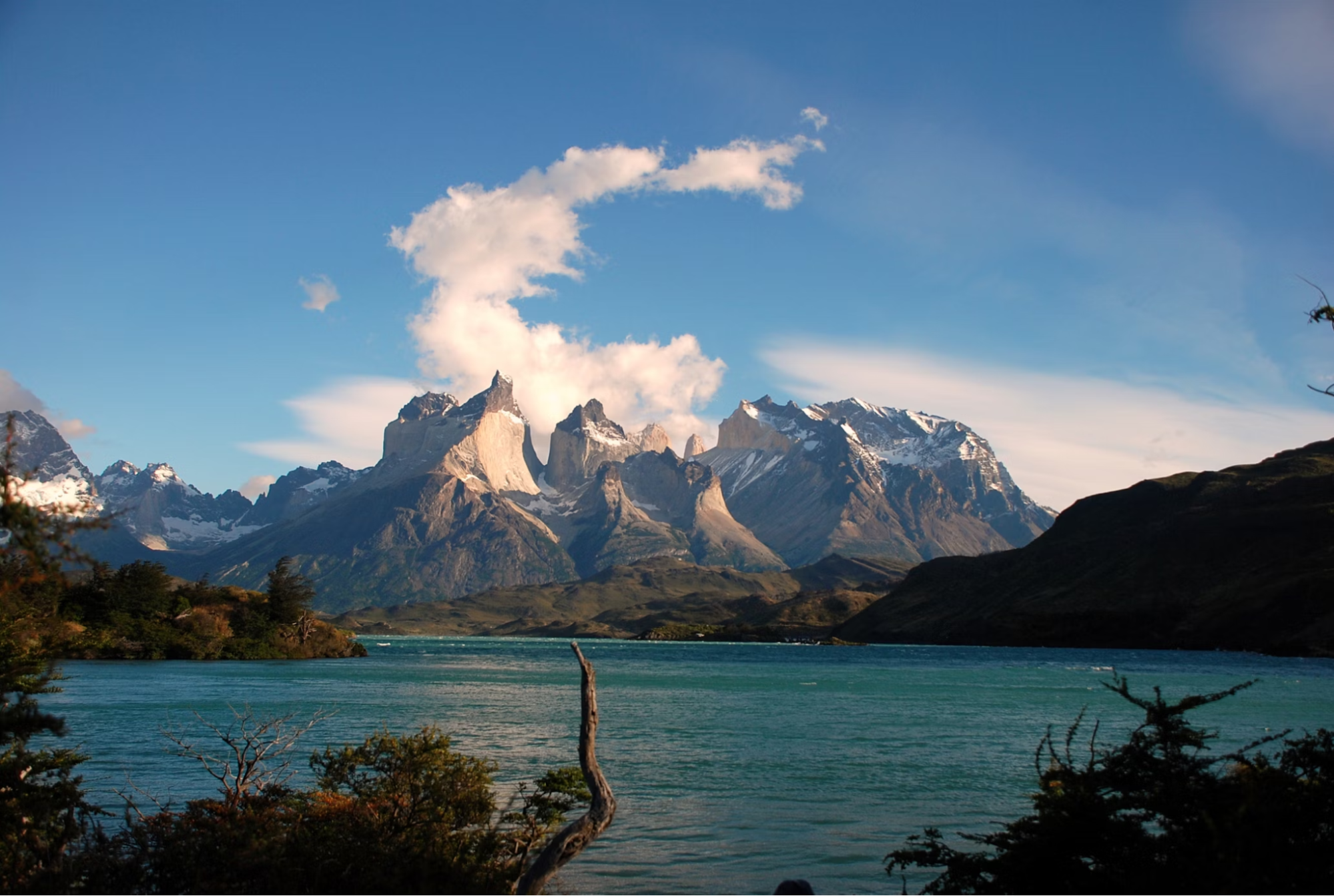- Wine Color/Type
- Top Occasions
- Unique Wines
- Surprise Me!
Pinot Noir Beyond Burgundy World Tour VI: Chile, Argentina
We love Pinot Noir for a variety of reasons: its elegance and finesse that stand out amidst the bold, rich red wines; its versatility of styles and food pairing abilities; and its potential to craft the world’s finest, most complex wines despite being high maintenance in the vineyards and in the cellar.
In the world of Pinot Noir, Burgundy is its spiritual home without doubt. But it's gaining popularity all over the world. Pinot Noir has journeyed to the Southern Hemisphere, becoming the signature grape for some of the most interesting wine regions thousands of miles away from Burgundy.
Chile and Argentina are emerging as important players in the global market for Pinot Noir wines. While both countries have traditionally been associated with other varietals—Chile with its famed Carménère and Argentina with its iconic Malbec—recent years have seen a surge in the production of high-quality Pinot Noir, showcasing the unique terroirs and winemaking expertise of these South American countries.
Chile: Pushing Boundaries in Pursuit of Perfection
Chile's winemaking history dates back to the late 19th century, but it wasn't until the 1980s that the country began to experiment with Pinot Noir seriously. Historically known for bulk wine production, Chile took time to refine its techniques and elevate its reputation in the global wine market. Fast forward to the present day, and Chilean winemakers have made significant strides in crafting exceptional Pinot Noir wines that rival those of Burgundy or Oregon.
Chile's natural barriers, including the Atacama Desert, the Andes Mountains, and the Pacific Ocean, create diverse microclimates ideal for winemaking. Regions like San Antonio and Casablanca valleys, with their cool climate and limestone soils, have become renowned for producing top-quality Pinot Noir. The coastal influence and unique soil composition contribute to the development of elegant wines with red fruit aromas, smooth tannins, and perfect acidity.
The journey of Pinot Noir winemaking in Chile has been one of dedication and innovation. Initially handling Pinot Noir akin to Bordeaux blends, Chilean winemakers took time to understand and exploit the grape's potential fully. Through meticulous attention to detail, from soil management to vineyard site selection, Chilean producers have honed their craft to produce wines of exceptional quality and complexity. Today, Pinot Noir is grown across a vast range of terroirs, each contributing to the diversity of styles found in Chilean wines. With a growing number of wineries dedicated to producing high-end Pinot Noir wines, there's never been a better time to explore Pinot Noir offerings from Chile.
The vineyard in Aconcagua of Viña Errázuriz with Pinot Noir plantings (Credit:Viña Errázuriz)
Chilean Pinot Noir is celebrated for its distinct flavor profile, characterized by intense aromas of red fruits like cherries and strawberries. The country’s long and narrow shape provides a wide range of climates. There are earthy, mineral-driven styles reminiscent of Burgundy or fruitier versions with higher alcohol levels, offering something for every palate at a very attractive price.
Argentina: Redefining Tradition with Pinot Noir
While Malbec being Argentina’s national grape, the country's winemakers have been quietly making waves with another varietal: Pinot Noir. Despite its relatively brief history in Argentina, Pinot Noir has quickly gained traction. In fact, Pinot Noir is planted in more wine regions in Argentina than Malbec.
Argentina's winemaking landscape is as diverse as its geography, with vineyards stretching from the high-altitude valleys of Salta to the cool, southern reaches of Patagonia. Producers are pushing boundaries, harnessing the potential of Argentina's terroir to produce distinctive Pinot Noir wines with vibrant flavors and unparalleled complexity.
Patagonia, located at the southern tip of South America, is the Pinot Noir capital in Argentina. The cool, maritime climate, influenced by the nearby Atlantic Ocean, creates ideal conditions for growing this delicate grape variety. The region experiences significant diurnal temperature variations, with warm days and cool nights, which contribute to the development of complex flavors in the grapes.
The landscape of Patagonia (Photo: Snowscat, Unsplash)
Inspired by the success of Patagonia’s iconic winery, Bodega Chacra, producers began seeking out old vineyards and experimenting with different clones suited to Argentina's unique terroirs. From the Uco Valley to Río Negro, winemakers are crafting Pinot Noir wines that reflect both the terroir and the house style.
Like Chile, Argentinian Pinot Noir wines showcase a diverse range of styles. Producers in cooler regions like Casablanca Valley aim to replicate the earthy, mineral-driven style of Burgundy, while those in warmer regions like Colchagua Valley craft richer, more concentrated wines with bold fruit aromas and complex layers of flavor.
As Argentina's winemakers continue to refine their techniques and explore new terroirs, the country's Pinot Noir wines are gaining recognition for their exceptional quality and unique character, whether it's in the rugged and remote landscape of Patagonia or the high-altitude Uco Valley.
As the final stop of our Pinot Noir beyond Burgundy world tour, we previously visited and explored the great Pinot Noirs. From old world classics like France, Germany and Italy, to new world gems like Napa, Sonoma, Oregon, Australia and New Zealand. As we finish the journey, we selected some of the best Pinot Noirs from South America, for you to savor the Pinot Noir tour. Cheers!
Sylvia Ba
[insert:wine:cono-sur-20-barrels-limited-edition-pinot-noir-2020]
[insert:wine:clos-des-fous-pour-ma-gueule-pinot-noir-2020]
[insert:wine:errazuriz-las-pizarras-pinot-noir-2020]
[insert:wine:luca-g-lot-pinot-noir-2020]
[insert:wine:chacra-cincuenta-y-cinco-pinot-noir-2021]
Latest articles


